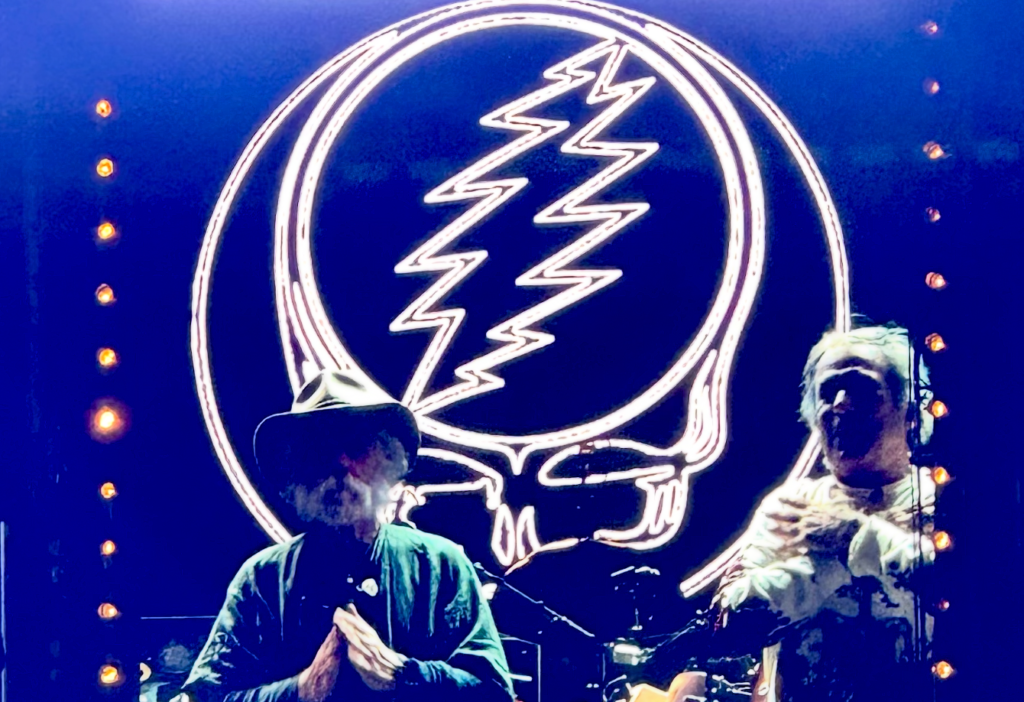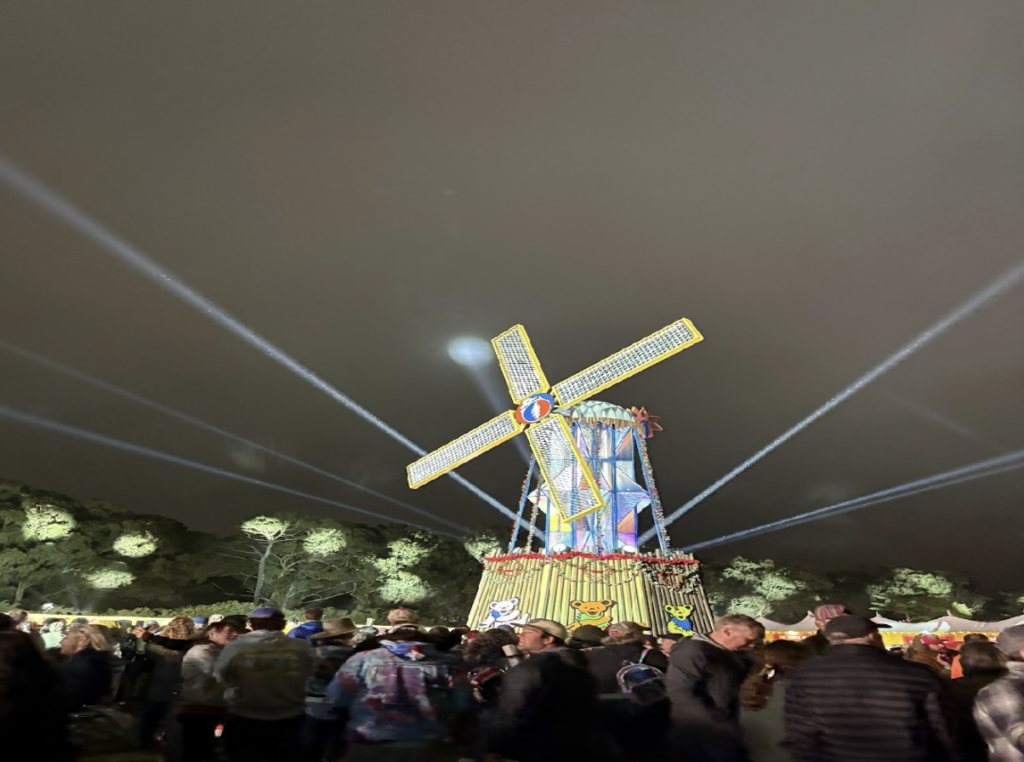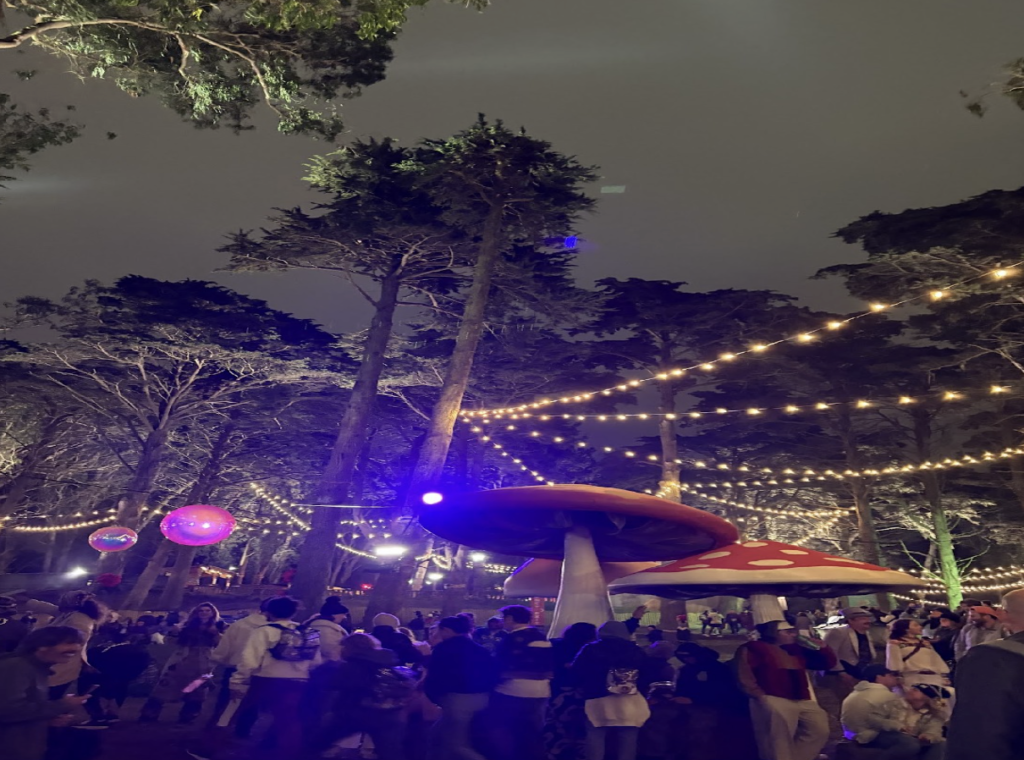The San Francisco fog, a familiar friend to many Grateful Dead shows, rolled in with an unspoken acknowledgment of this special occasion. Inside the park, a blanket of people covered the Polo fields for the band’s 60th anniversary.
My mother, a veteran Deadhead, stood beside me, her eyes welling with tears in awe of nostalgia and revamped joy. Around us, my brothers and their buddies from college, a new generation of Deadheads, mingled along with my mom’s old friends.

But this was not the nonchalant vibe of the 1960s and 1970s nor the parking lots circus of the ’80s and ’90s.
In the early days of the band, and pretty much up to the death of Jerry Garcia and the end of the old Grateful Dead, concert tickets were intentionally kept affordable to legions of fans. (Jerry Day in the city is still free.)
This time, tickets went for as much as $6,000. Instead of camping on friends’ couches, visitors stayed in fancy hotels like the Fairmont. Some longtime Deadheads refused to go, and one told the Standard that “Jerry is rolling over in his grave.”
The story of the Grateful Dead and San Francisco serves as a meaningful metaphor for the city and its ever-changing transformations.
The Dead, which once came from an ethos that symbolized the rejection and dismissal of greed and establishment culture, is now part of the strategy for the city’s economic strategy. The change from a movement defined by counterculture to a weekend of music that encourages spending and civic pride shows how a historically radical culture has sunk into San Francisco and has been celebrated by the very system it once sought to escape from—and a system that tried to repress it, sometimes violently, in the now-famous Summer of Love.
The Grateful Dead and this city have been linked from the very beginning. The band began here in the defiant days of the 1960s. Back then, fans of the Dead found tickets much easier to get. The access was easier, in general.
A late 1980s Deadhead told me there was a time when everyone simply ran into the field, at max spending $20-$30 for a concert into the 1990s.
As San Francisco celebrated the 60th anniversary, Dead & Company in Golden Gate Park gave a special opportunity to reflect on the band’s evolution, a story from counterculture to a cultural phenomenon—a direct mirror to the city’s own political and social change.

The Summer of Love took place in Golden Gate Park, and faced a lot of pushback from city officials. Though standing for peace, love, and the simple pleasures of good music, the rise of psychedelic drugs and a new form of rock was overwhelming for the city to manage. The “hippies” were not welcome in a lot of places, and far from celebrated by most city officials.
Today, Mayor Daniel Lurie’s administration has officially embraced the Dead & Company concerts, celebrating them as a “significant cultural milestone” and a key driver of the city’s economic recovery.
The political conversation is dominated by economic concerns right now, especially in the revitalization of San Francisco in a post-pandemic world. The city is actively promoting these concerts to attract people from all over and to boost local businesses, with posters, buses, and street signs advertising the three days of music.
Rather than talking about peace and love, the city trumpets estimates that the concerts will have a $150 million economic impact—a world apart from the anti-capitalist sentiments of the Grateful Dead, and the 1960s counterculture.
Muni was not only providing extra services, but also running Grateful-Dead-inspired buses. Hop on the bus, and it might drop you off at the legendary “Shakedown Street” in Golden Gate Park in the JFK promenade between Transverse Drive and Blue Heron Lake Drive. It was a Deadhead marketplace vendors from all over the country come to offer handmade art, shirts, crystals, roses, and enduring spirits of the Grateful Dead.

The three days of music held much more than the Dead & Company themselves. Doors opened at 2:30 PM with lines throughout the park, anticipation buzzing, and everyone coming in with the collective embrace of good music.
Billy Strings, Sturgill Simpson, and Trey Anastasio opened for Dead & Company. Young and old came together to celebrate the music. Tie-dye, bubbles, and glitter were full-out signifying a diverse yet unified crowd: the timeless tunes of the Grateful Dead were the bridge of multi-generational gaps.
Dead & Company came with their imperious blend of widely loved melodies and creatively inspired interpretations of the music, delivering three nights of musical journeys. Whether you’re a fan of the Grateful Dead for 60 years, or a fan for just the weekend, the blend of music revealed beloved classics to unexpected gems.
As the final notes faded on Sunday night, a bittersweet feeling sat in the crowd that night. When the music had stopped, the echoes of good vibes continued. Bob Weir and Mickey Hart stood upon their San Francisco roots in awe of the palpable sense of community.
This weekend was something entirely built from the culture old Deadheads once knew, to the uprising of the new generation of music, with touches of different eras throughout the band’s life. The streets were dancing again. At the corner of Haight and Ashbury, hippies gathered and children sang, spanning through to Golden Gate Park. I knew these shows would be more than just a concert, but a testament to the enduring power the Grateful Dead’s music holds, no matter what point in time.




